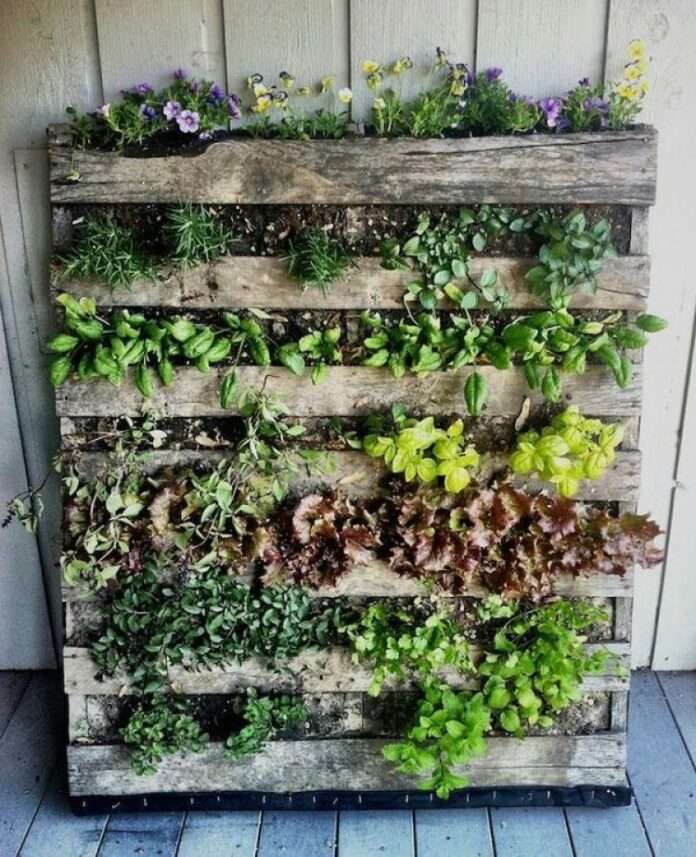K-State horticulture expert says many crops can adapt to growing on a structure
MANHATTAN, Kan. – Even the most ambitious gardeners realize they can only plant a given amount of crops in the ground they have…right?
Kansas State University horticulture expert Ward Upham said there is a way to make more efficient use of space in the garden: growing some of your crops vertically, as in upward.
“Growing vertically not only helps conserve space but can also help prevent disease due to better air movement. Also, harvesting those crops can be easier,” Upham said. “If you have a small garden, growing vertically can allow more crops to be grown.”
Tomato cages are a good example of how crops can be grown vertically, and other crops can be trained to grow up a structure, according to Upham. They include pole beans, peas and such vining crops as cucumbers, melons, squash and gourds.
“Edible-pod and snow peas are better adapted to growing vertically than English (shelling) peas because they have longer vines,” Upham said.
He suggests avoiding ‘bush-type’ vining crops because they are bred to produce shorter vines. “Another thing to keep in mind is that large fruit from vining crops may need to be supported so they don’t damage the vine,” he said.
Upham said bamboo poles and cattle panels are a couple options as supporting structures. Bamboo poles are often used to form a teepee to support pole beans. Cattle panels, often 16 feet long, may need to be cut in half for a better fit, then tied together to form a “pup tent.”
“Crops can then be planted at the base of each panel,” Upham said. “Another way to support a cattle panel is to tie the panel to T-posts so that it will stand upright.”
Transplanting tomatoes early
Upham also has a few tips for those who would like to set their tomato plants up to produce earlier in the year.
“Most people who try to get a jump on the season set their tomatoes out early and hope they do well,” he said. “However, that is often not a good plan because tomatoes have certain requirements to grow well, including an acceptable soil temperature for root growth, and an acceptable air temperature for plant growth and fruit set.”
If conditions cooperate, Upham said a target date of two weeks earlier than normal is something for gardeners to shoot for. Two keys to look for include:
• Root growth – Tomatoes need a soil temperature of at least 55 degrees Fahrenheit to do well. Plastic mulch can be used to warm the soil, but allow several days to raise the soil temperature. Check the soil temperature 2 ½ inches deep at 11 a.m., or use the average of temperatures taken before and after your work day.
• Air temperature – Plants must be protected from frost. Hot caps or water teepes can be placed over young plants to protect them, and provide a higher average temperature that encourages growth. If the temperature goes below 55 degrees overnight, tomato flowers may not set. The plant is not hurt, but the blossom will not set fruit, or will set fruit that is misshapen.
Upham and his colleagues in K-State’s Department of Horticulture and Natural Resources produce a weekly Horticulture Newsletter with tips for maintaining home landscapes. The newsletter is available to view online or can be delivered by email each week.
Interested persons can also send their garden- and yard-related questions to Upham at [email protected], or contact your local K-State Research and Extension office.
FOR PRINT PUBLICATIONS: Links used in this story
K-State Horticulture Newsletter, https://hnr.k-state.edu/extension/info-center/newsletters/index.html
K-State Research and Extension local offices, www.ksre.k-state.edu/about/stateandareamaps.html
K State Research and Extension is a short name for the Kansas State University Agricultural Experiment Station and Cooperative Extension Service, a program designed to generate and distribute useful knowledge for the well being of Kansans. Supported by county, state, federal and private funds, the program has county extension offices, experiment fields, area extension offices and regional research centers statewide. Its headquarters is on the K State campus in Manhattan. For more information, visit www.ksre.ksu.edu. K-State Research and Extension is an equal opportunity provider and employer.
Story by:
Pat Melgares
785-532-1160
[email protected]
For more information:
Ward Upham
785-532-6173
[email protected]





